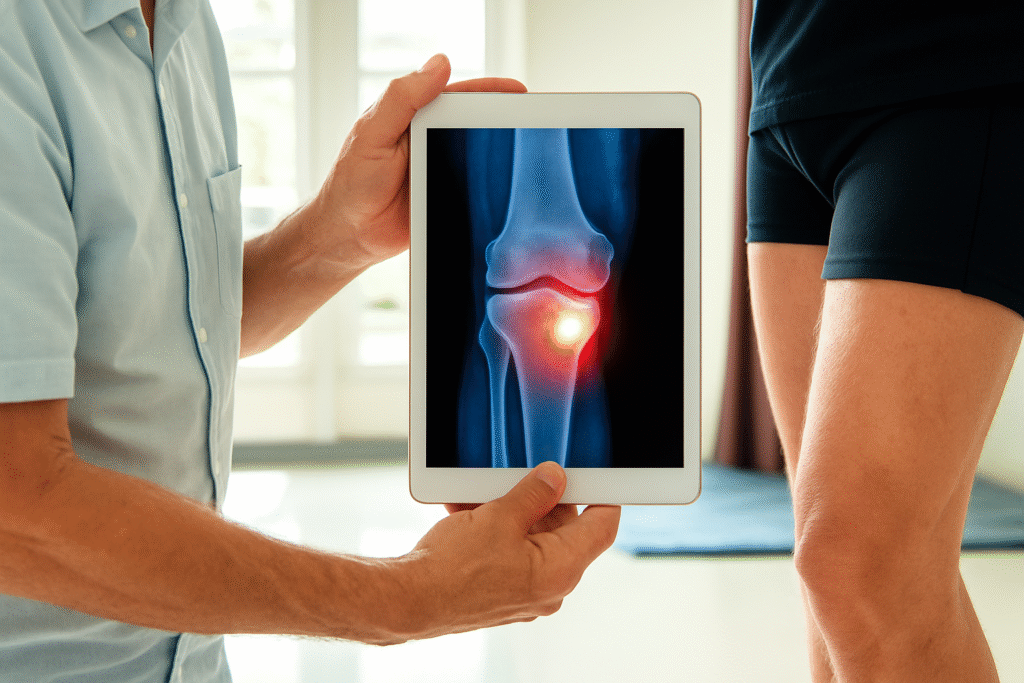Can Pulsed Electromagnetic Fields Ease Knee Osteoarthritis Symptoms? A Closer Look at the Evidence
Knee osteoarthritis (OA) is a chronic, often debilitating condition that affects millions worldwide, especially in aging populations. Among the wide array of therapeutic strategies under investigation, Pulsed Electromagnetic Fields (PEMF) have garnered increasing interest for their potential to modulate pain and improve joint function. A pivotal 2005 study published in Osteoarthritis and Cartilage by Thamsborg et al. took a rigorous approach to investigate this therapy’s true impact.
Inside the Study: Design and Approach
This was a randomized, double-blind, placebo-controlled trial — the gold standard in clinical research — designed to evaluate the efficacy of PEMF therapy in individuals with symptomatic knee OA.
The intervention lasted six weeks, with participants undergoing daily two-hour sessions, five days a week. The PEMF was applied using a pair of coils strategically positioned around the knee joint, emitting focused pulses (±50 V at 50 Hz) designed to target the joint space effectively.
What Did the Study Find?
Intragroup Improvements
Within the PEMF-treated group, significant improvements were noted across key symptom domains:
-
Pain
-
Stiffness
-
Activities of Daily Living (ADL)
These improvements were sustained through follow-up, indicating a potential lasting benefit. In contrast, the placebo group showed weaker and more delayed responses, particularly in ADL.
Age Matters
Interestingly, age played a significant role in treatment outcomes. Patients under 65 experienced notable benefits:
-
Significant reduction in stiffness within just two weeks
-
Improvements in pain and ADL that were not observed in their placebo counterparts
For older participants, however, the benefits were less pronounced, suggesting that PEMF’s efficacy may diminish with age.
Between-Group Comparisons: A More Nuanced Picture
Despite clear improvements within the PEMF group, the differences between PEMF and placebo groups were not statistically significant overall. Both groups experienced around 15% reduction in pain by follow-up. However, stiffness improvements at two weeks were statistically better in the PEMF group (p = 0.032).
This suggests that while PEMF may offer a real and rapid effect — especially on stiffness — its overall advantage over placebo was modest in this population.
Safety and Tolerability
PEMF was well tolerated, with no serious adverse events reported. Some participants noted transient sensations (e.g., warmth or throbbing), which were mild and resolved without intervention. This supports PEMF’s safety as a non-invasive adjunctive therapy.
How Might PEMF Work?
While the mechanisms remain speculative, several hypotheses exist:
-
Improved local blood flow
-
Stimulation of chondrocyte activity
-
Enhanced cartilage differentiation and repair
The quick onset of stiffness improvement suggests a vascular or neuromodulatory effect rather than structural joint changes.
Conclusion: A Promising but Not Definitive Therapy
While this study did not demonstrate a broad, statistically significant benefit of PEMF over placebo across all age groups, it does point to promising effects in younger patients, especially regarding joint stiffness. The findings support further exploration of age-targeted protocols and longer treatment durations.
Bottom line: PEMF therapy shows potential as a safe, non-invasive tool for improving symptoms in younger knee OA patients — but more tailored research is needed to determine who benefits most, and why.
